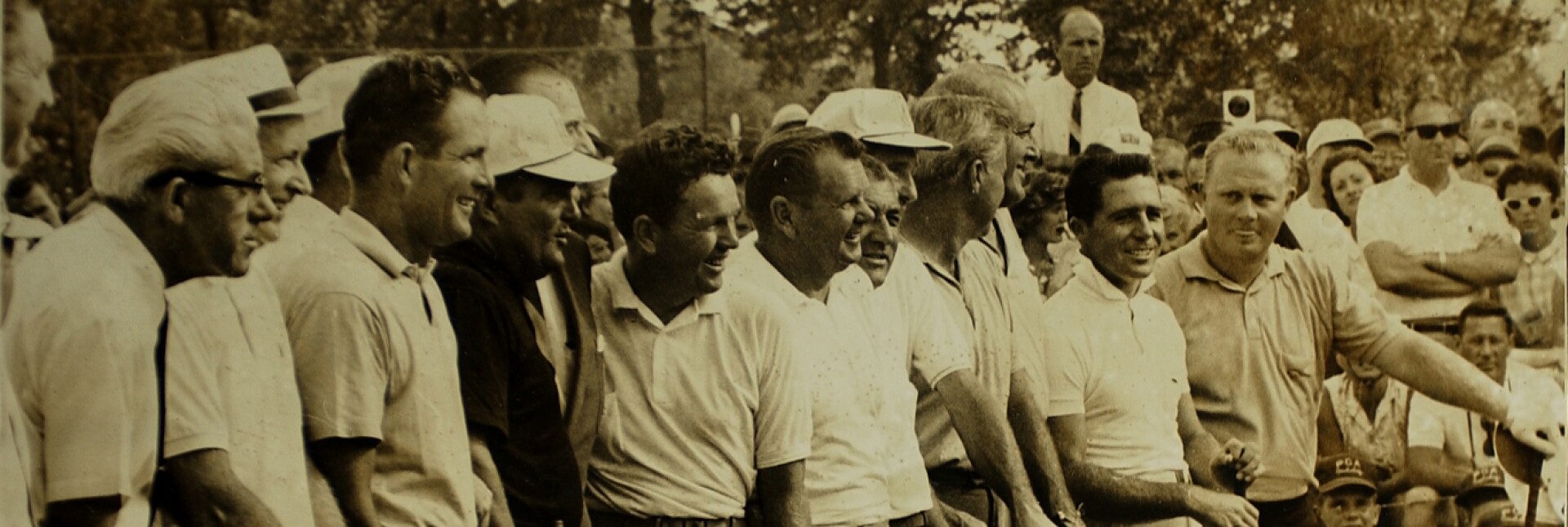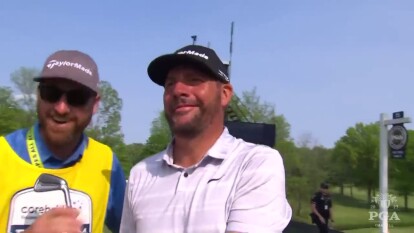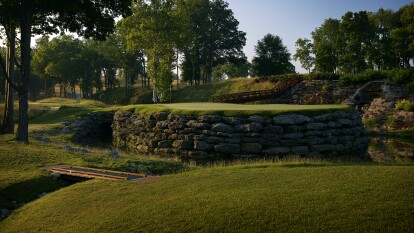A few days after winning the 1960 PGA Championship at Firestone Country Club in Akron, Ohio, Jay Hebert brought his replica of the Rodman Wanamaker Trophy to his mother’s home in Lafayette, Louisiana.
Antonia (Landry) Hebert, matriarch of the famed golf family, embraced the trophy and put it on a small cabinet in her living room. She then spoke French to it as if it was alive: “Je parie que vous ne pensiez pas que vous reviendriez ici.”
“I bet you didn’t think that you would be back here again.”
Mrs. Hebert had reason to be beaming. Her oldest son, Jay, had won a major three years after her youngest son, Lionel, captured the final match-play PGA Championship title in 1957. The brothers rose from the caddie ranks at Lafayette Municipal to achieve golf’s highest rung. Their father, Gaston Pierre Hebert, was a civil servant turned sheriff, then Town Marshal.
He never once watched either of his boys play golf. He died young, and thought the game a waste of time, a pastime for the retired.
The Hebert (pronounced “A-Bear”) family produced just the third set of brothers in golf history to each win at least one major. They followed Open Champions Willie Park Sr. (1960, ’63, ’66, ’75) and Mungo Park (1874); and U.S. Open winners Willie Smith (1899) and Alex Smith (1906, ’10).
And just over a decade ago, the good folks in Lafayette got around to renaming their local golf course in honor of the town’s favorite sons - The Jay and Lionel Hebert Municipal Golf Course.
From the mid-1950s to the mid-70s, Lionel and Jay Hebert were top dogs on the PGA Tour. Lionel won five PGA Tour events in addition to the 1957 PGA Championship, where he defeated Dow Finsterwald, 2 and 1, at Miami Valley Golf Club in Dayton, Ohio. He also played on the 1957 U.S. Ryder Cup Team.
Jay was a member of the 1959 and ’61 U.S. Ryder Cup Teams and was non-playing captain in 1971. He was a seven-time winner of the PGA Tour, finishing T-7 in the 1958 U.S. Open and T-8 in the 1959 Masters.
Heading into the 1957 PGA Championship, Lionel was 49th on the season money list while Finsterwald was third. In two previous PGA Championships he’d not advanced past the fourth round. But in the semifinals he defeated Walter Burkemo, who had beaten older brother Jay in the previous round. He then jumped ahead of Finsterwald with a birdie on the 32nd hole. After Finsterwald found the water two holes later, Hebert pocketed the winner’s paycheck of $8,000.
Lionel appeared in 580 events on the PGA Tour and PGA Tour Champions before retiring in 1986. That was a long way from caddieing barefoot at age 8, then turning professional in 1950. But it wasn’t until the fall of 1956 that he quit his job as a club professional in Erie, Pennsylvania, to join the tour full time. To improve his technique, he studied photos of the swings of golf's greatest players.
Lionel had other talents, too. He had studied music at Louisiana State University, becoming a talented trumpet player, carrying his horns—gifts from Harry James and Tommy and Jimmy Dorsey—while traveling on tour.. ''I play it whenever I feel down,'' he said after winning the PGA Championship.
He was upbeat the following year when he won at Tucson. Next to capturing the PGA, Lionel said that it was his biggest thrill, proving to himself that his major championship was no fluke.
PGA Professional Jean-Paul Hebert, 49, was born 10 years after his father Jay’s PGA triumph.
He just finished his sixth season as an assistant men’s golf coach at the University of Texas-Austin. As a youngster, he received golf tips not only from his father, but also from Uncle Lionel. Jean-Paul retains a special memory of his father describing the closing moments at Firestone.
“Dad had a birdie putt of 15 feet on 18, and needed just two putts to win,” said Jean-Paul. “He said, ‘I made a daylight stroke,’ which was taking the putter back just far enough to see light between the club and ball. He was that nervous.”
Jay, who finished birdie-par-birdie-par for an even-par 70, later told the assembled media that his lag putt was “the most commercial putt you’ll ever see.”
Jay Hebert passed away in 1997, and kept some things to himself, including a sobering experience in World War II.
His education at Southwestern Louisiana Institute was interrupted by the war, where he eventually served as a lieutenant platoon leader with the Fifth Marine Division at Iwo Jima. He was wounded not far from the summit of Mount Suribachi, where fellow Marines famously raised the American flag, a sniper’s bullet through the left thigh hospitalized him for a year. He fully recovered.
At a press conference after winning at Firestone Country Club, a young reporter asked him facetiously, "Jay, is the 16th hole here tougher than Iwo?"
Hebert looked at the reporter seriously and said, "Nothing is."




